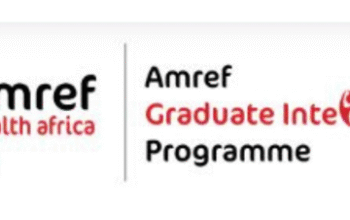African Development Bank 40 Internship Opportunities

History and Its Current Operations
Khartoum, Sudan, September 1964. A group of African men meets in Khartoum, Sudan, to ratify the multinational agreement establishing the African Development Bank. They represent twenty-five of the continent’s governments. They all share the same mission and the same hope: that this new institution will contribute to Africa’s development and unity.
With this act, Africa reclaimed its destiny during the first decade of the 1960s.
Numerous events and initiatives mark the road that led to the creation of what has become Africa’s leading development finance institution.
Among these “founding” acts was the Tubman-Nkrumah-Touré conference of 1958, the year the Organization of African Unity (OAU) was created. The heads of state of Liberia, Ghana, and Guinea, three countries that champion Pan-Africanism, spend four days in conclave in the village of Sanikoli, Liberia.
Their final communiqué states their “determination to use all their resources to lead all African countries to independence and to achieve the development of the continent in unity.”
The origins of the Committee of Nine
Three years later, in 1961, the Monrovia Conference took place. It brought together a host of heads of state and government and gave birth to the Monrovia Group.
At the heart of the debates at this meeting, and at the subsequent one in Lagos, were two draft charters: one for the OAU and one for an African development bank.
This second proposal was quickly forwarded to the United Nations Economic Commission for Africa.
A Committee of Nine was soon established, a think tank for the project, made up of financial experts and economists from nine countries representing Africa’s diversity (Cameroon, Ethiopia, Guinea, Liberia, Nigeria, Sudan, Tanganyika, and Zanzibar—which formed Tanzania in 1964).
The Committee of Nine visits almost all African heads of state, as well as Western and Eastern European leaders, to present their vision of an African development bank.
An agreement is sealed
Many obstacles still had to be overcome before the African Development Bank could be founded.
But enthusiasm, driven by the need to see the continent emerge from poverty, prevailed.
A document was submitted to senior African officials and then presented to all the continent’s ministers before being co-signed by twenty-three African governments on August 4, 1963, in the form of the agreement establishing the African Development Bank.
This agreement came into force on September 10, 1964.
Thus, in March 1965, after a few months in offices made available to the Bank on the premises of the Economic Commission for Africa in Addis Ababa, a first team of ten people joined the Bank as its first employees.
Following the inaugural session of the Board of Governors of the new institution, held from November 4 to 7, 1964, in Lagos, Nigeria, the Bank set up its headquarters in Abidjan, Côte d’Ivoire, in March 1965.
The first president was Mamoun Beheiry (Sudan), who served from 1967 to 1970.
The Bank launched its first projects in 1966-1967: an equity investment in the National Development Bank of Sierra Leone and a loan for road construction in Kenya.
Two concessional windows were later created: the African Development Fund (ADF), on November 29, 1972, with 13 non-African countries, with initial contributions of $101 million; and the Nigeria Special Fund (NSF), created in 1976 by the Federal Government of Nigeria, with initial capital of $80 million.
While retaining its fully African character, the bank admitted non-regional member countries in 1982. To become a member of the Bank Group, non-regional countries must first be members of the ADF.
From February 2003 to the end of 2013, the bank operated from its temporary Relocation Agency in Tunis, Tunisia, due to the political turmoil in Côte d’Ivoire, before returning to its Abidjan headquarters in 2015. At that time, the Bank had almost 2,000 employees.
The Bank after 50 years
Fifty years on, in 2014, the African Development Bank Group marks its 50th anniversary.
In five decades, it has financed more than 4,100 operations for a continent that passed the one billion mark in 2010. At the time, it comprised 79 countries. And for several years now, it has enjoyed the highest AAA rating from the major financial rating agencies.
Since its creation, the Bank has kept pace with Africa, surviving each crisis and expanding and diversifying its resources and actions year after year.
It has taken part in efforts to overcome conflict and professionalize the continent’s financial and political institutions. It has coordinated its activities with those of other partners in the fight against poverty: international financial institutions, governments and public development aid agencies, and non-governmental organizations.
It has increasingly designed its actions in consultation with representatives of local communities so that the latter can play an active role in their own development. It has also emphasized the role of women, education, and structural reform. And it has supported major initiatives such as external debt relief for heavily indebted poor countries, regional integration, and the New Partnership for Africa’s Development (NEPAD), for which the Bank is one of the prime contractors.
But nothing is complete. While growth and the restoration of macroeconomic equilibrium have progressed in all African latitudes in recent decades, challenges remain.
The African Development Bank Group is relentlessly pursuing its founding mission: to serve the development of the whole of Africa.
Internship programme
The primary objectives of the Internship Program at the African Development Bank Group are to deepen the Bank’s efforts to advance development within its regional member countries (RMC) through capacity-building activities.
The broad objectives of the program are to provide opportunities for acquiring and developing the ability to work in an international environment, to provide the Bank with a pool of potential candidates for the future, and to enhance the visibility of the Bank and its development activities.
The bank plans to recruit 40 interns as part of Session 2 of its 2025 Internship Program.

Program participants are selected on a competitive basis, reflecting the bank’s business needs.
Minimum requirements:
Must be 30 years old or younger by 31 December 2025.
Hold a bachelor’s degree and be enrolled in a master’s degree program in a recognized public or private institution of higher learning, OR be applying for the internship within one year of having obtained a master’s degree.
Proof of enrollment in a university/professional institution/school.
Citizen of a bank member country.
Able to communicate effectively (in writing and orally) in English or French, with a working knowledge of the other language.
Female candidates are encouraged to apply.
In addition to the above selection criteria, preference will be given to candidates who demonstrate the following:
Adaptability to multicultural settings.
Good communication skills.
Working knowledge of a third language relevant to the bank’s operations.
Experience on projects that have a direct bearing on the Bank’s mission.
The Bank aims to select candidates with professional degrees in the following disciplines:
Power, Energy, Climate, and Green Growth.
Agriculture, Human and Social Development.
Private Sector, Infrastructure, and Industrialization.
Economics, Statistics.
Governance and Knowledge Management.
Finance.
Legal.
Human Resources and Corporate Services: IT, Language Services, General Service & Procurement, and HR Management.
To Apply, CLICK HERE
Recommended Opportunities
Plan International Internship Post in Monitoring and Evaluation in Uganda
Supply Chain Internship Post in Berlin Germany
UNFPA Human Resources Internship Post in Nairobi, Kenya



